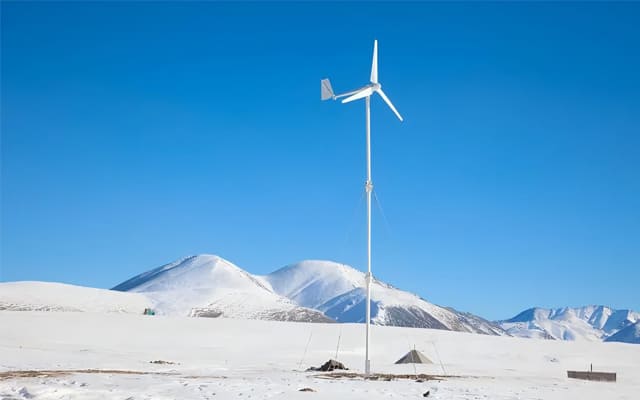When it comes to clean and efficient energy, the wind electric generator stands out as a reliable solution. However, its safe operation under varying wind conditions—especially light breezes and extreme winds—requires advanced control systems.
The Challenge with Traditional Wind Electric Generators
In traditional systems, the blade angle is fixed. This means that during strong gusts, the rotor can spin uncontrollably fast. As a result, turbines may face:
-
Blade imbalance and potential damage
-
Surges in electric current
-
Increased wear and risk of failure
These are major safety concerns, especially in residential or off-grid applications where manual oversight is limited.
The Role of Variable Pitch Control
To solve these problems, engineers developed the pitch-controlled wind electric generator. This system allows the blade angle to adjust dynamically based on real-time wind conditions. When wind speeds exceed the rated threshold, the blades automatically shift to reduce aerodynamic load, stabilizing rotor speed.
Benefits of pitch control include:
-
Safer operation under high wind speeds
-
Extended equipment lifespan
-
Improved energy output control
-
Reduced risk of system shutdowns or damage
With the help of automatic control systems, the wind turbine not only responds to environmental changes but also self-regulates its performance to ensure smooth and continuous operation.
What Happens When Wind Speed Is Too High?
Every wind electric generator has a designed maximum wind speed—commonly referred to as the “cut-out” speed. Once exceeded, the system must shut down to avoid:
-
Overspeed damage
-
Structural imbalance due to increased inertia
-
Blade deformation or fracture
To prevent such scenarios, advanced monitoring systems are used to trigger automatic shutdowns, or allow remote operators to safely power off the generator when necessary.
Power Generation Efficiency: It’s Not About Speed Alone
Many assume that faster blade rotation means more electricity. However, in a well-designed wind electric generator, power depends on the torque applied to the blades and the swept area—not just RPM.
A larger rotor area means more wind capture. For instance, a 1.5 MW wind electric generator can produce up to 1500 kWh of electricity per hour at full capacity, even at relatively stable rotational speeds.
Why Choose a Modern Wind Electric Generator?
Today’s wind electric generators are smarter, safer, and more efficient than ever before. With built-in features like:
-
Variable pitch control
-
Automated monitoring systems
-
Real-time performance adjustment
-
High wind protection mechanisms
…they provide clean energy with minimized operational risk.

